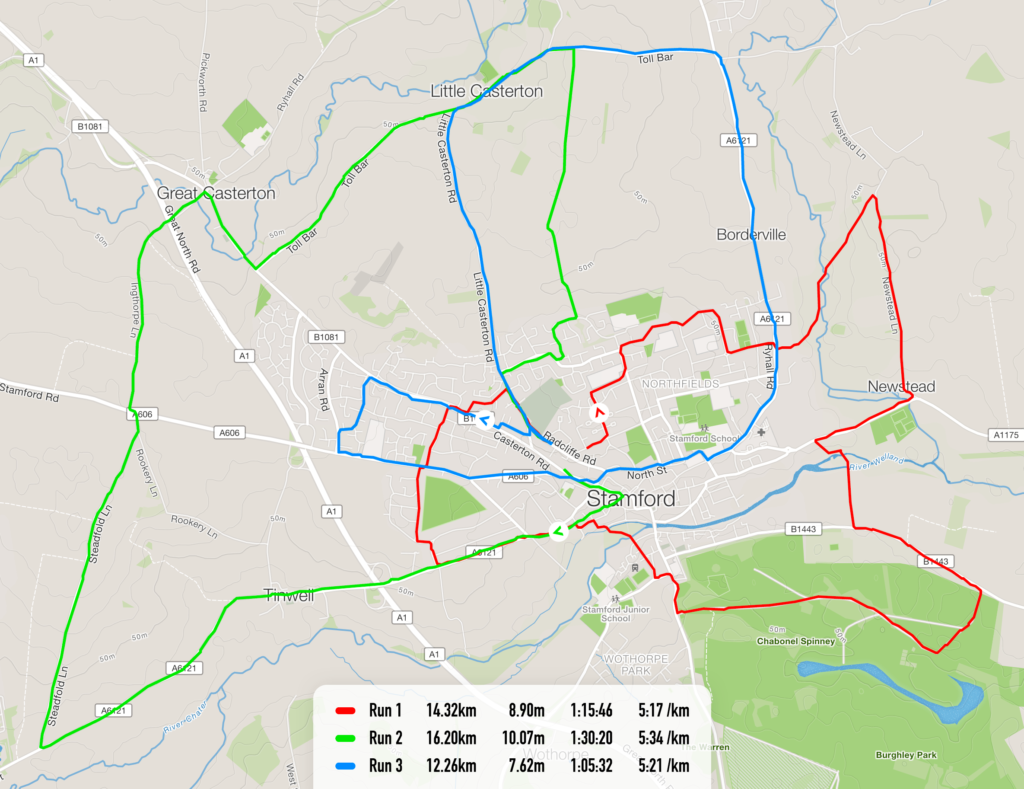Some musings I had while out for a run the other day.
There’s not a huge amount to say about running other than that I have ‘discovered’ it over the last two years it’s a now thing that I seem to be partially dependent on. When I fall out of the routine, say due to illness or tiredness from going out too late, everything seems to begin slowly unravelling. There are obviously many worse things to be hooked on so I’m not that worried about it but still it is an addiction of sorts.
Running is also the only time I really get to myself where I’m not busy, mentally speaking, with something. It is good thinking time, although this can unfortunately lead to blog posts.
...
Some time around 2005 I was traveling by plane on my own. I was reading Richard Dawkins’ 1986 book The Blind Watchmaker. I studied A-level biology so know a bit about the mechanics of genetics (dominant and recessive alleles, experiments with fruit flies and so on) but had never really thought about it deeply or philosophically. And the book does go quite deep.
I came to a particularly astonishing passage in the book describing and explaining how all life is really connected. And it is connected in the scientific sense, not just as some vague hippie sentiment. I had a moment of sudden insight (exactly what the author intended to convey), framing all life on Earth as genetically related, interconnected, and symbiotic. Seeing life forms as essentially different configurations of vehicle for the replication of DNA. And while each species is opinionated about how best to go about the mission, all of us have (in a reduced and ultimate way) exactly the same mysterious end goal of keeping life going.
Naturally Dawkins put it much better than me, and I don’t have the book to hand, but I do remember that when the concept sank in the hairs on my arms and the back of my neck stood on end, and I lowered the book to my lap, stared out the window at the Earth from above for a moment and mouthed the words ‘fucking hell’.
One of those moments, anyway.
...
So a few days ago I was out running. I nearly always take my Bluetooth headphones and distract myself from the exertion of it all with an audiobook or podcast but on this occasion I’d been having problems with the Audible app and it was stuck in some kind of loop syncing to my watch. This was holding me up so I decided to leave the headphones at home and go ‘unplugged’. It was early. I took a route further out of town than usual, one I’d only cycled or driven before.
The weird atmosphere of the COVID lockdown has been commented on at length, but that morning the whole area felt particularly deserted. As I ran the weather started to turn. The wind picked up and whirled around so I was being rained on from all sides. It was the sort of weather that, had I just been walking, would have been miserable but I don’t mind the rain when I’m running because I get hot and so it’s refreshing (within reason).
There is not really a point or conclusion to this post, nor do I wish to imply pretentiously that I had any particularly special or unique revelation. It’s just... because I had so much time to think after the moment had passed, as I ran home, I resolved to write it down if only because it was interesting to me at the time and I want to remember it. A personal experience.
I had not passed a single person for at least half an hour. I was completely drenched but warm and in that running zone where you start to feel like a well oiled machine that could keep on going forever.
Everything seemed wilder and more overgrown than usual, brambles snaking aggressively out of hedgerows. Of course this could have just been down to the changing season and the amount of both sun and rain there had been recently but my imagination was wandering.
There was this sense of the very beginnings of nature reclaiming the land, which of course it always is until we cut it back. The trees seemed huge and impressive, twigs swishing noisily through the air as the branches swayed around. The birds were singing loudly in the canopy overhead. The wind seemed to get stronger, whipping the trees more violently, and due to the air swirling in different directions there was, I thought, a slight doppler effect applied to the birdsong which mixed in with the rain gave it a dreamlike sense.
And all of this brought me back to that moment on the plane in that way that you sometimes remember a feeling.
Yes it does sound a bit pretentious but, hell, whatever. Nature is pretty amazing.
I suppose the lesson is that I should leave my headphones at home more often, and also maybe that the most obvious outdoor weather: a nice sunny day, is not necessarily the most interesting.





